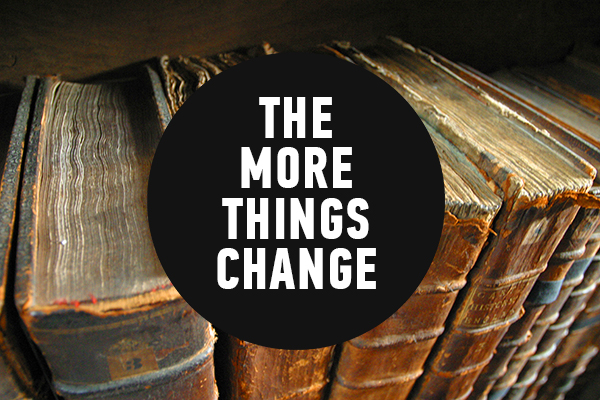The More Things Change | Issue 11
May 13 - 19
May 15, 1940: Richard and Maurice McDonald opened their first fast-food restaurant, and probably had no idea that it would end up being such a big deal. A few years later, the guy who sold them their milkshake machines bought the restaurant out and started opening restaurants all over the place, thus beginning the ascent of McDonald’s. (The same guy initially refused to open a restaurant in New Zealand, because “I never met a more-dead-than-alive hole in my life”. Go figure.) McDonald’s is now the single most advertised brand name in the world, due to its relentless marketing – the golden arches and catchy slogans have made a significant impression. The McDonald’s franchise is also known for its willingness to adapt to what its customers want: in Germany, they sell beer.
May 16, 1960: In one of the more visually entertaining triumphs of physics, Theodore Maiman won the race to operate the first optical laser, which was made with a synthetic ruby and produced light of a deep red colour. As well as looking cool, lasers have contributed to a whole host of useful technology like barcode scanners, printers, and DVD players (that great technological achievement of the early noughties). You can use them to perform surgery, or any other sort of cutting your heart desires. Apparently, the biggest disappointment of laser technology is that nobody has yet created a functioning lightsaber, but presumably there are safety issues that have to be considered. The physicists responsible for this probably wouldn’t like it if people started using the results of their hard work to remove each other’s limbs.
May 17, 1970: Thor Heyerdahl, one of the more ambitious explorers of recent years – which might have had something to do with his being called Thor – set off from Morocco to sail across the Atlantic in a papyrus boat. He was trying to demonstrate that ancient people could have done it, which he managed on his second attempt by making it to Barbados. Heyerdahl had previously sailed from South America to Polynesia under similar conditions because he wanted to prove that Polynesia had been settled by South American people in pre-Columbian times, but most modern-day anthropologists think his theories were wrong. Heyerdahl persistently ignored the linguistic, cultural and archaeological evidence that contradicted his ideas, and carried on sailing his little boats. Such dedication is admirable, especially in light of experts who said that the evidence for such voyages could just as easily have been carried by birds.



